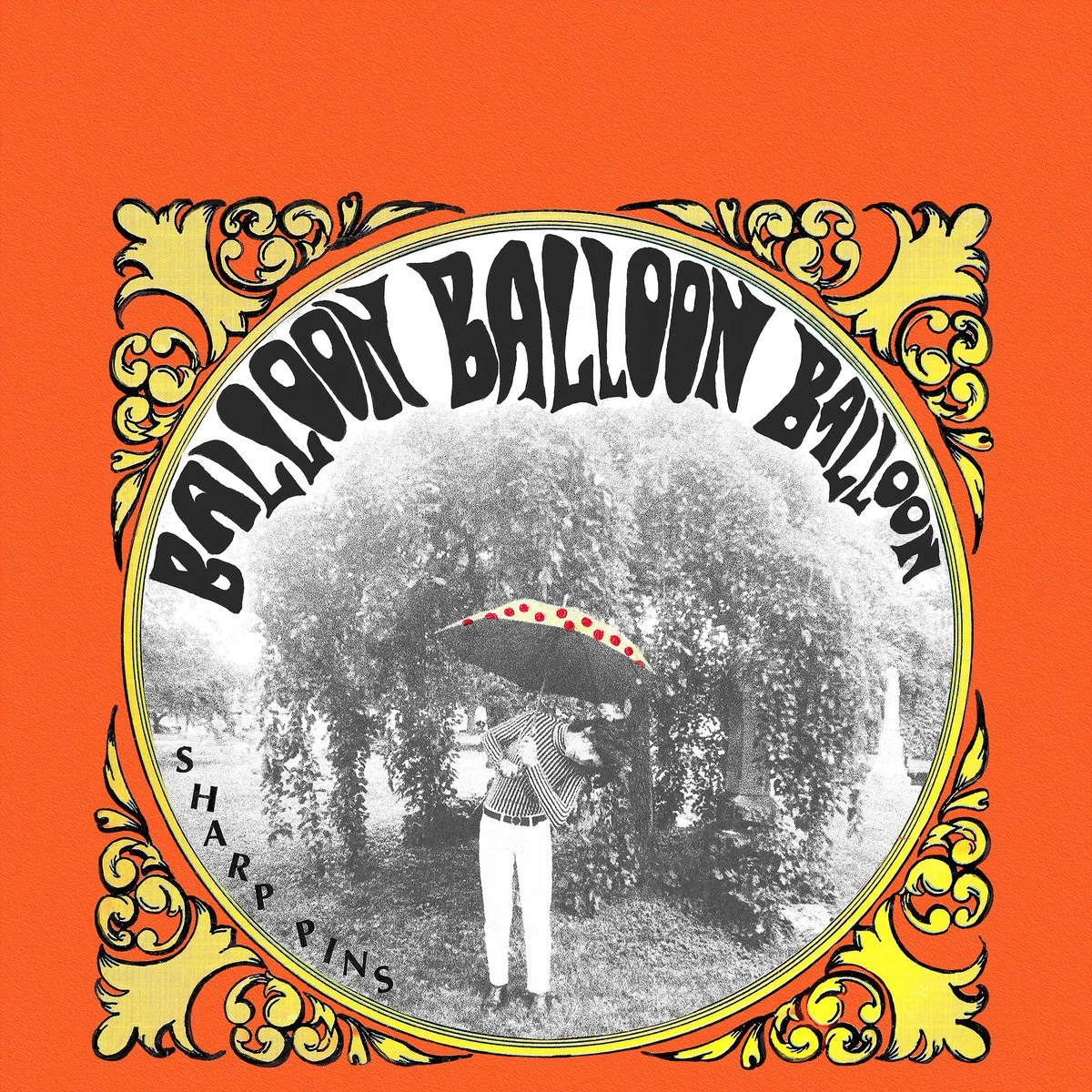by Ivy Skarda (@ivyskarda)
I woke up in Chicago a couple Sundays ago to a light snowfall outside the windows of an apartment that was not mine – it didn’t stick around for too long, bleeding into tepid rain and draining down into sewer grates by mid-morning. The first few seconds of Balloon Balloon Balloon, the upcoming third Sharp Pins album, wafted into the air with a drum fill and a jangly guitar riff ricocheting off the winter-proofed windows. The music felt apt for the times, the first week of autumn's dwindling days where warm, gooey frequencies feel cozy instead of overbearingly muggy.
Sharp Pins is the solo brainchild of Kai Slater, a stylishly lanky 20-year-old who has come to position himself as the unassuming spokesman of Chicago’s DIY indie rock scene. Between publishing the lovably scrappy Hallogallo zine and performing as one-third of buzzy post-punk group Lifeguard, The Sharp Pins project fell by the wayside of Slater’s crowded resume until the reissue of his excellent sophomore album Radio DDR in March, a pristinely twee collection of slacker rock gems that showcased his studied, unparalleled knack for punchy melodies and a profound reverence for mod culture and 1960s psychedelia.
In contrast with Radio DDR, which is practically sequenced like an early-career greatest hits album, Balloon Balloon Balloon is stitched together by tracks that pass like murky radio broadcasts from distant decades. Sharp Pins songs are low-fidelity to the point where they often sound as if they’re being played from another room of your apartment – Balloon Balloon Balloon feels like flipping through a crate of flimsy, unlabeled 7-inch records, each one dustier than the last. Some sound like the breakout hit of a now-forgotten teen beat group, some come off as freakish sonic experiments buried deep in a B-side.
Hooky opener “Popafangout” is the album’s most immediate, and easily its most hi-fi – the following twenty tracks and transmissions are thoroughly ramshackle, all engulfed in varying levels of room noise, crunchy distortion and feedback. Playing with traditional conventions of sonic songforms, each song is uncomfortably familiar while sounding entirely foreign – “Queen of Globes and Mirrors” sounds like a hypnagogic take on a teary-eyed slow dance number, while tracks like “Talking in Your Sleep,” “Takes So Long,” and “(In a While) You’ll Be Mine” are dead ringers for deep cuts on unheard albums of mouthy, rickety rockers.
In a recent interview with The Line of Best Fit, the writer likens Balloon Balloon Balloon to “zine music” as opposed to the traditional hard-facts journalism of Radio DDR. That metaphor ultimately gets down to the core of what makes each project so compelling: if Radio DDR sees Slater playing the hits, Balloon Balloon Balloon is his sandbox for weird, retrofitted experiments that see him tinkering with both fidelity and expectation. It’s difficult to imagine one person sitting down and banging out all these tunes on their own, but Slater seems to get a kick out of doing exactly that – proverbially blowing up the titular balloons just to watch them pop.

